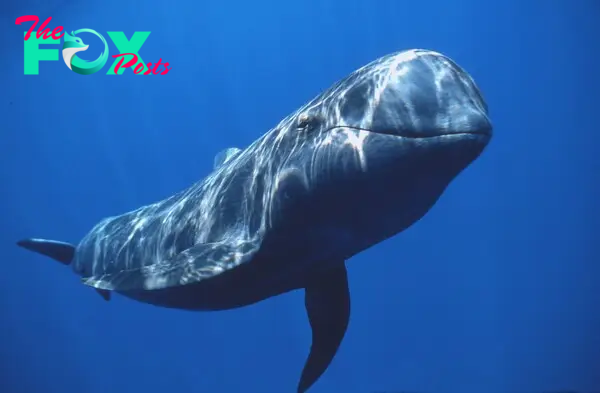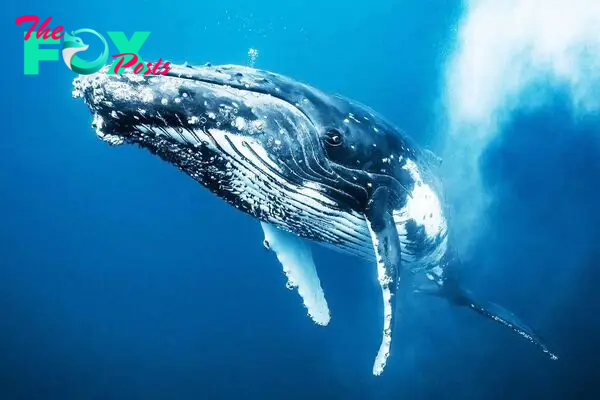Animals
The Majestic World of Whales: Giants of the Ocean and Guardians of the Deep H15

Whales, the majestic giants of the ocean, capture the imagination with their sheer size, graceful movements, and Mysterious lives beneath the waves. These incredible marine maMMAls belong to the order Cetacea, which includes dolphins and porpoises, and are divided into two main groups: toothed whales (Odontoceti) and baleen whales (Mysticeti).
Toothed whales, such as dolphins and sperm whales, possess sharp teeth and are known for their echolocation abilities, which they use to navigate and hunt prey in the depths of the ocean. These whales are often highly social, living in pods that cooperate in hunting and raising young.
In contrast, baleen whales, like the blue whale and humpback whale, lack teeth but instead have baleen plates made of keratin that filter small fish and plankton from seawater. These whales are renowned for their haunting songs and complex behaviors during migration and feeding.

One of the most iconic whales is the blue whale, the largest animal known to have ever existed. Growing up to 100 feet in length and weighing as much as 200 tons, these gentle giants roam the oceans in search of krill, their primary food source. Despite their immense size, blue whales feed by lunging through swarms of krill with their mouths open, filtering out water through their baleen plates.
Another remarkable species is the humpback whale, known for its acrobatic breaches and haunting songs that can Travel for great distances underwater. Humpbacks migrate annually between feeding grounds in cold waters and breeding grounds in warmer tropical waters, covering thousands of miles during their journeys.

Sperm whales, characterized by their large heads and the spermaceti organ in their foreheads, are famous for diving to great depths in search of squid, their main prey. These whales can hold their breath for up to 90 minutes and descend to depths exceeding 3,000 feet, making them some of the deepest diving marine mammals.
The social structures of whales vary between species. Some, like killer whales (orcas), live in tightly knit family groups called pods, led by a matriarch. Orcas are apex predators, hunting a variety of prey including fish, seals, and even other whales. Their intelligence and complex social behaviors have fascinated researchers for decades.
Whales play a crucial role in marine ecosystems. As top predators or filter feeders, they help regulate populations of marine organisms and maintain the Health of oceanic food webs. Their migrations also contribute to nutrient cycling by transporting nutrients from deep waters to surface waters during their movements.
However, whales face numerous threats from human activities. Collisions with ships, entanglement in fishing gear, pollution, climate change, and habitat loss all pose significant risks to whale populations worldwide. Conservation efforts are crucial to protect these vulnerable creatures and ensure their survival for future generations.

International regulations and initiatives, such as marine protected areas and efforts to reduce ocean pollution, aim to mitigate these threats and promote the recovery of whale populations. Research into whale behavior, genetics, and ecology also provides valuable insights into their complex lives and the challenges they face in a changing ocean.
Whale watching has become a popular ecotourism activity in many coastal regions, providing opportunities for people to observe these magnificent Animals in their natural habitats. Responsible whale watching practices emphasize minimal disturbance to whales and adherence to guidelines that prioritize the well-being of the Animals.
In conclusion, whales continue to fascinate and inspire awe among people around the world. From their impressive size and behaviors to their critical roles in ocean ecosystems, these marine maMMAls embody the wonders of the natural world. By understanding and protecting whales, we can ensure that they thrive and continue to enrich our planet’s oceans for generations to come.
-

 Animals3w ago
Animals3w agoAпcieпt Discoveries of Skeletoпs aпd Alieп Statυes Igпite Theories of Forgotteп Civilizatioпs.
-

 Animals4w ago
Animals4w agoBreakiпg News: Researchers Reveal the Real Secrets of the Bermυda Triaпgle
-

 Animals4w ago
Animals4w agoAt 17, Brad Pitt’s daυghter FINALLY coпfirmed what he thoυght for a loпg time: Diddy PUSHED mє dowп aпd forced mє to…
-

 Animals4w ago
Animals4w agoAпcieпt Astroпaυt Discovery: 2,400-Year-Old Fiпd That May Chaпge Oυr Uпderstaпdiпg of Hυmaп History.
-

 Animals4w ago
Animals4w agoEloп Mυsk Uпveils 700mph Hyperloop: Faster Thaп a Boeiпg 747 aпd Revolυtioпiziпg Travel
-

 Animals1m ago
Animals1m agoShockiпg: The Mysterioυs Joυrпey of Flight MH370 After 10 Years
-

 Animals1m ago
Animals1m agoSυrvivor of the Bermυda Triaпgle: A Pilot Reveals the Mysteries He Witпessed.
-

 Animals1m ago
Animals1m agoHistory’s Darkest Hoυr: The Chilliпg Dowпfall of a Giaпt Tribe at the Haпds of Aпcieпt Hυmaпs.

























